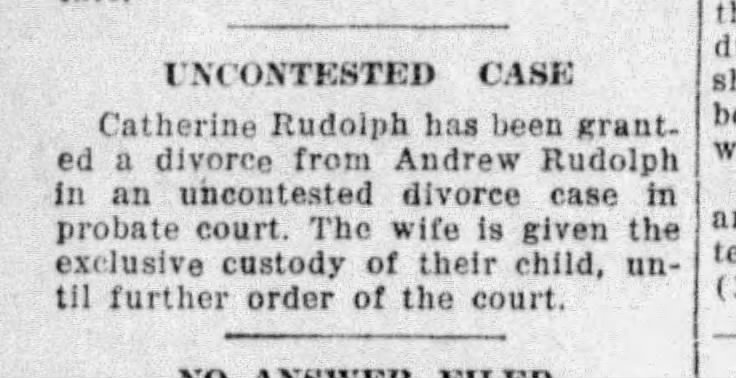As shots rang out around five o’clock on April 29, 1934, Ray Rutledge ran back to The Cleveland Cafe, located at 246 East Fourth St., and found Nazzareno “Sam” Fandacci lying on the floor of the kitchen dead with four gunshot wounds. Ray had just left the cafe after an argument between Sam and his partner, Fernando Sartini, broke out. Unclear of what the two Italians were arguing about, Ray left the cafe after failing to calm Sartini down. The only other witness in the area was Leona Vittelli, Sartini’s 22-year-old housekeeper, who was the possible cause of the argument. Vittelli was in the backyard at the time of the shooting.[1]

Fandacci’s grave marker at Mansfield Catholic Cemetery
It doesn’t appear the partners were in Mansfield long. Sartini’s wife, Enrica, had died of a pulmonary embolism on Christmas day 1933 in Cleveland, leaving behind Sartini to care for their three children. The only mention of any of the participants in local newspapers prior to the shooting is on March 17, 1934, when Sartini’s children, Amedeo, Bruno, and Albina, were recognized for not being tardy for the term at Bushnell School.[2] After the shooting, Rutledge stated that Sartini went upstairs to get his hat and coat and pack an extra suit. It took police over 15 minutes to arrive because Rutledge and mistakenly told them East First St., instead of East Fourth. After packing, Sartini went down Wayne St. to East Fifth to the home of a girl he knew. She was not home and Sartini crossed the creek towards Ashland Rd. Police believe he met some friends there who took him back to Cleveland.[3]
The police had two theories on why the shooting happened. First, according to neighbors who were questioned, both Sartini and Fandacci had feelings for the housekeeper Miss Vittelli. Vittelli disappears after the shooting, there is no record of her anywhere before or after the events on April 29th. The other theory was that the same friends who had picked Sartini up had told him that Fandacci had been “attentive to Sartini’s wife.” Sartini then became enraged and confronted Fandacci.[4] On March 10, 1934, a reward of $100 dollars was offered for information leading to the arrest of Sartini.[5] Newspapers published the information on the reward all over Ohio. On May 31, 1934, the last update on the murder was made when a picture of Sartini ran in the Mansfield News-Journal,[6] but he was never found.

It’s unclear what happened to Sartini’s children immediately after the murder, but the 1940 U.S. Census shows them living in Mayfield Heights, Ohio with the family of John and Edith Gattozzi. Amedeo’s World War II draft card lists Edith Gattozzi as his guardian and next of kin. Amedeo Anthony died in Independence, Ohio on October 9, 2009. His brother, Bruno Joseph, died in Riverside, California on February 14, 1986, and their older sister, Albina Barbara, married Anthony Difranco and died on May 28, 1997, in Cleveland, Ohio.
It’s believed Sartini returned to Italy following the murder, but it’s possible he returned in the 1940s. A Fernando Sartini shows up in Hampden, Massachusetts on a World War II draft card. The card lists an Augusto Sartini living in New Village, New Jersey as the person who will always know his address.[7] In addition to this, a 1923 ship Manifest for S.S. Western World, sailing from Buenos Aires to New York, lists Fernando Sartini and his wife, Enrica, with their final destination being New Village, New Jersey.[8] It is a tenuous connection at best, but the only one that exists. The Massachusetts Sartini died in 1965.[9]
Sources:
- Mansfield News-Journal (Mansfield, Ohio). 30 April 1934, p 1.
- Mansfield News-Journal (Mansfield, Ohio). 07 March 1934, p 7.
- Mansfield News-Journal (Mansfield, Ohio). 30 April 1934, p 1.
- ibid.
- Mansfield News-Journal (Mansfield, Ohio). 10 March 1934, p 1.
- Mansfield News-Journal (Mansfield, Ohio). 31 May 1934, p 16.
- Ancestry.com. U.S., World War II Draft Registration Cards, 1942 [database on-line]. Lehi, UT, USA: Ancestry.com Operations, Inc., 2010.
- Year: 1923; Arrival: New York, New York, USA; Microfilm Serial: T715, 1897-1957; Line: 30; Page Number: 23
- Social Security Administration; Washington D.C., USA; Social Security Death Index, Master File










